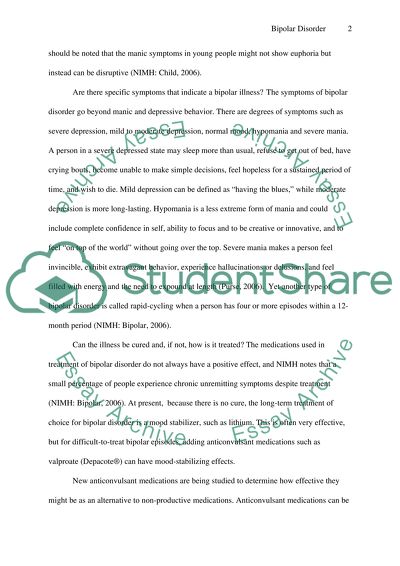Cite this document
(“Bipolar Disorder Essay Example | Topics and Well Written Essays - 750 words - 3”, n.d.)
Bipolar Disorder Essay Example | Topics and Well Written Essays - 750 words - 3. Retrieved from https://studentshare.org/psychology/1506930-bipolar-disorder
Bipolar Disorder Essay Example | Topics and Well Written Essays - 750 words - 3. Retrieved from https://studentshare.org/psychology/1506930-bipolar-disorder
(Bipolar Disorder Essay Example | Topics and Well Written Essays - 750 Words - 3)
Bipolar Disorder Essay Example | Topics and Well Written Essays - 750 Words - 3. https://studentshare.org/psychology/1506930-bipolar-disorder.
Bipolar Disorder Essay Example | Topics and Well Written Essays - 750 Words - 3. https://studentshare.org/psychology/1506930-bipolar-disorder.
“Bipolar Disorder Essay Example | Topics and Well Written Essays - 750 Words - 3”, n.d. https://studentshare.org/psychology/1506930-bipolar-disorder.


